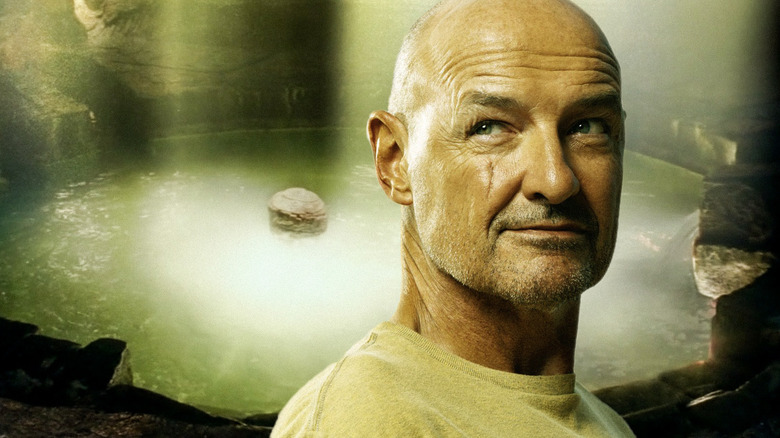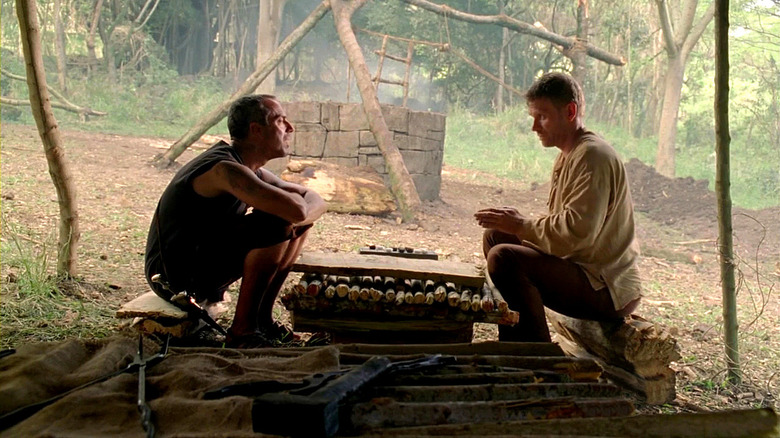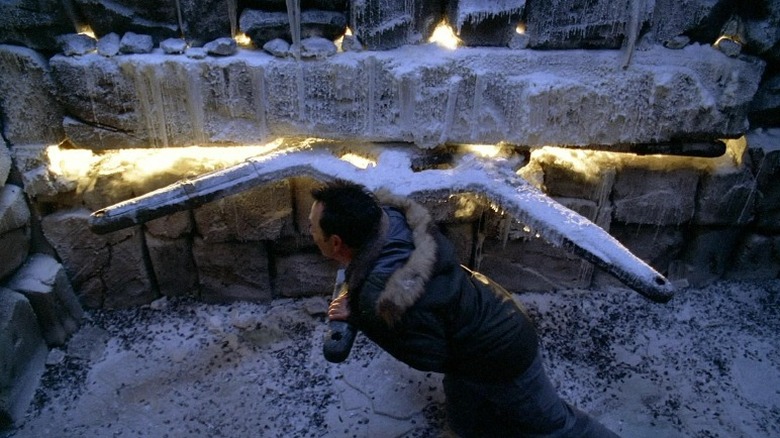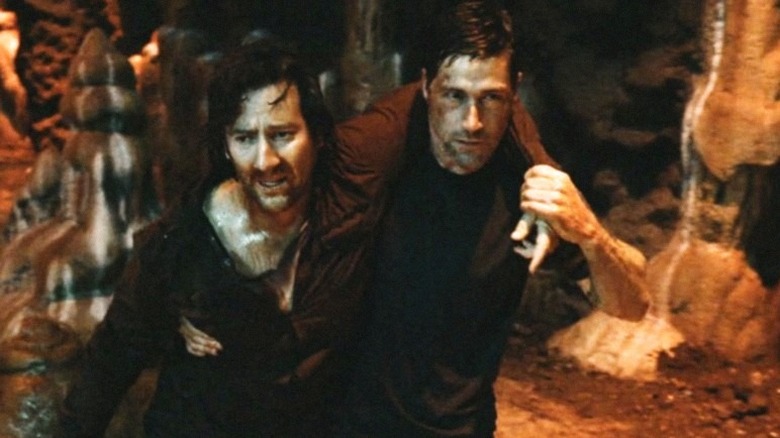The Heart Of The Island's Powers In Lost Explained
By the time "Lost" was nearing its finale, the initial wave of questions from its first season felt fairly quaint. The Others ended up being creepy book club suburbanites. The polar bear was one of many animals brought to the Island decades earlier. The French Woman was the sole survivor of a scientific expedition. Simple enough.
Once immortality, the smoke monster, and time travel had risen to the fore, any hope of a single scientific explanation drifted away. But an idea was threaded throughout the show that the Island housed a potent pocket of electromagnetic energy. Something that scientific organizations and military operations had attempted to locate and exploit throughout the decades: the Heart of the Island.
Essentially, the Heart of the Island was a catch-all explanation for the most magical of occurrences in the show. Pictured as a golden light emerging from a cavern, it reflected the heights of what made the Island special. And if it had been introduced earlier than three episodes before the show's finale, it might have even been satisfying.
The Protector of the Light
Originally, the climax of "Lost" was going to be set atop an active volcano, but budgetary concerns and larger aesthetic questions led to the idea being scrapped. Instead, the focus shifted to the idea of a strong light near the Island's center, one that represented "life, death, and rebirth." It was something to be protected, because somebody was always going to attempt to find it.
For most of the show, the Protector is the immortal Jacob (Mark Pellegrino), the oft-alluded-to but rarely seen leader of the Others. However, in the late episode "Across the Sea," set some 2000 years before the crash of Oceanic Flight 815, we meet the earliest Protector in the show — an unnamed woman (Allison Janney) who steals twin baby boys from a castaway and raises them on her own: Jacob and the Man in Black (Titus Welliver).
She teaches them the value of the light, but the two see things differently. The Man In Black joins a settlement on the Island and starts striving for a means of escape. When his Mother destroys the settlement, he kills her. In turn, Jacob throws the Man in Black into the Heart of the Island, where he emerges as the smoke monster, who represents death and memory.
The brothers spend the next two millennia in constant struggle. As the smoke monster, the Man in Black cannot escape the Island while the light is on. Only the death of the Protector can allow him to destroy it.
The Heart Through the Ages
In the mid-19th century, when Richard (Néstor Carbonell) arrives on the Island from the Black Rock slave ship, he is caught in the battle between the brothers. Jacob explains himself, and his role as Protector. He likens the Island to a cork; once the cork is released (or the light destroyed) the whole world will fall into darkness. Knowing that his brother wants to kill the light and leave, Jacob makes Richard immortal and appoints him as an ally. As Protector, his connection to the light allows him to cure various ailments, such as Locke's paralysis and Rose's cancer.
But human activity can also corrupt the light, leading to an adverse effect on health. For instance, the Incident that led to the creation of the DHARMA Initiative Swan Station also created difficulties for pregnancies on the Island from 1977 onward. For DHARMA, the scientific organization that seeks to prevent the end of the world, the Heart is why they work on the Island: their physicists believe they can harvest the power to manipulate space and time.
However, the only actual physical time travel on the show comes not from DHARMA's industrial technology, but the same ancient equipment that the Man in Black was hoping to use to escape the Island in the first place: an underground ship wheel plugged directly into a wide shaft of light.
When Ben (Michael Emerson) uses the wheel in the fourth season to move the Island, he is transported to Tunisia, 9 months later. Everybody left behind on the Island is thrown about across the timeline and ultimately ends up joining DHARMA in the 1970s. Our protagonists eventually throw a nuclear warhead into the electromagnetic pocket the Initiative is hoping to utilize, sealing their fates and creating the Swan Station, which ends up being responsible for the plane crash.
Uncorking the Light
The most memorable bit of time travel in the whole show comes from Desmond (Henry Ian Cusick), who ends up exposed to the electromagnetic radiation in the show's second season when the Swan Station blows up. The radiation sends his consciousness back and forth through time, giving him glimpses of the future — and allowing him to live as his past self, in the show's most beloved episode, "The Constant."
Desmond's vulnerability to radiation is why the Man in Black ultimately uses him to uncork the light in the show's final episodes. Desmond is believed by both him and Charles Widmore (Alan Dale) to be the only person capable of getting the job done successfully, without suffering the same fate that the Man in Black did on entering the cave.
When he does, the light goes out. Red volcanic imagery emerges from where the light was, and the Island begins to experience apocalyptic seismic fissures, suggesting that everything Jacob said about the light was true. Of course, all ends well. Jack (Matthew Fox) is able to reset the cork and set Desmond free from the light. And there's a visual tie to the show's final controversial moment as well, when the light surrounds all of the major characters, suggesting that saving the light in this life also saved it for the next.



